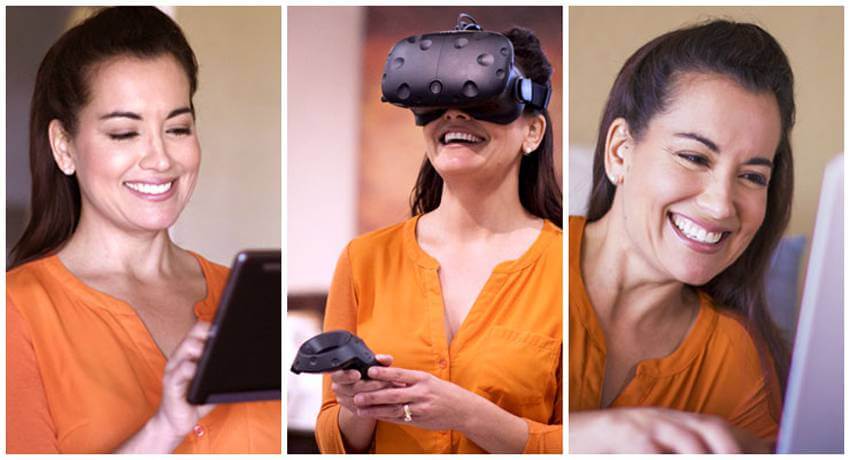
Unified commerce — customer experience is the key
Today’s shoppers interact with their favorite retailers in a variety of ways. They may go to a brick and mortar location, browse a website, or shop with a smartphone app. Since at least the early 1990s, retailers have been developing omnichannel solutions that meet customers wherever they want to shop, which instills loyalty and boosts the bottom line. Today’s retailers are moving to a new concept, unified commerce, which looks to build upon the innovations of omnichannel strategy while better tying together retail into a seamless customer experience.
In the beginning …
Hubspot defines omnichannel strategy as, “a multichannel sales approach that provides the customer with an integrated shopping experience.” In other words, no matter how the customer attempts to interact with a business — be it at a traditional brick and mortar location, through a website or mobile app, or via another emerging retail channel like a touchscreen kiosk — a company utilizing an omnichannel solution will be there to meet them.
Omnichannel has its roots in the Automated Teller Machine, aka the ubiquitous ATM, which freed bank customers from both the dreaded “theater line” to see a teller and the restrictive hours branches were open. Young people today have no idea of the struggle to simply get cash. God forbid you needed money over the weekend! The ATM brought banking to the customer in a way that had not been tried before, and it was a hit with the public.
The Internet: More money, more problems
In the mid-1990s, another new force arrived on the scene — the Internet. With it came e-commerce and the potential for billions of dollars in profits for enterprising retailers. But those retailers first had to figure out how to best engage with their customers online. The early results were basic, and largely about inspiring confidence in a process that required the user to provide a credit card number to an “unknown” website. This is a normal act today (you might even have your credit info stored in your browser to speed up the process), but back in the 1990s the fear was real.
After a period of building trust, e-commerce retailers finally became firmly established in the public consciousness by the mid-2000s. For example, the term Cyber Monday — coined to describe the uptick in online sales retailers see the first Monday after the Thanksgiving — was first used in 2004, by shop.org in a press release following the holiday shopping season. Then in 2007, the iPhone changed the game yet again by creating a mobile marketplace that was both similar to and distinct from web-based e-commerce.
Omnichannel: Friend or Faux?
By 2010, retailers had an abundance of distribution channels, led by brick and mortar locations, websites and mobile apps. But these systems had been developed separately and were often run as separate entities, which led to customer experiences that varied wildly from one channel to another. Retailers might stock different merchandise online then in store, or they might offer a killer online experience but be terrible at physical locations. This inconsistency in the experience led to the coining of a new term: “Faux omnichannel.”
Faux Omnichannel describes a business strategy that looks like an omnichannel solution, but is really just a bunch of different solutions crammed together.
According to the Multichannel Insights Blog, “Unified commerce places the customer experience as first priority by leveraging a single commerce platform. A single platform rids of internal channels that operate in their own silos. Instead, merchants leverage a ‘single, centralized, real-time platform for all customer engagement points.’ In this way, unified commerce is achieved.”
For example, 3D Cloud™ allows for the creation of 3D products that are then accessible any and all sales channels, be it web, mobile, Virtual Reality, Augmented Reality, or interactive touchscreen at the point of purchase. Using VisualCommerce™ 3D Cloud, a company like AZEK Building Products can develop multiple sales strategies across channels without having to recreate the experience for each unique platform. AZEK began using VisualCommerce™ 3D Cloud for a mobile experience for a tablet, but then switched gears to a full WebGL experience. VisualCommerce™ 3D Cloud is able to power both thanks to the platform’s inherent flexibility and “create once use anywhere” ethos for 3D products.
3D Cloud is not alone in developing a robust unified commerce platform and strategy, and there are some major players migrating from a straight omnichannel strategy to one that can be defined as unified commerce. Now that we’ve got the basic idea of unified commerce and why it’s important, let’s talk about who’s getting it right.
3 companies that are getting unified commerce right
1. Wal-Mart
You have to hand it to Wal-Mart’s Doug McMillon. The CEO of the nation’s largest retailer could be complacent from his company’s perch atop the big-box food chain, but instead he’s embracing the changes that unified commerce strategies bring.
“E-commerce at Wal-Mart is about bringing together all of the pieces to help customers buy the items they want at Wal-Mart prices, however and wherever they want,” McMillon said, as quoted in Diginomica. “Our customers look at us as one Wal-Mart, one easy experience across our app, site and store or club.”
You may be saying to yourself, so what? Isn’t that just an omnichannel strategy? To some extent yes, but it’s the way Wal-Mart is handling the sales backend that reveals the unified commerce strategy. “Wal-Mart maintains that it isn’t trying to replicate Amazon’s business model,” wrote the Wall Street Journal (as quoted by Forbes). “Instead, Wal-Mart plans to combine its stores, existing distribution centers, and new facilities into what it calls its ‘next generation fulfillment network.’”
That network will be built on a cloud-based software platform that will provide a unified experience for Wal-Mart’s customer, and allow the retailer to try new initiatives to better service those customers how and when they want. Like, say, with 24-hour grocery pickup.
2. Amazon
Of course, Wal-Mart is shaking things up in response to the challenge presented by Amazon. The online-retail colossus is constantly trying to increase its reach and better service its customers. This quest to be all things to all people has led Amazon to launch Prime Now, Fire TV, Alexa, and music and video streaming services, among other products and services. Now the company is experimenting with cashier-less shopping experiences (Amazon Go), physical book and grocery stores, drone delivery, and even, according to the New York Times, AR/VR assisted furniture showrooms:
“These would not be your average Home Depots: Amazon has considered using forms of augmented or Virtual Reality to allow people to see how couches, stoves and credenzas will look in their homes, the person briefed on the discussions said.
This is all made possible by Amazon Web Services (AWS), the software underpinning everything that Amazon does. Per Wikipedia, “As of 2016 AWS has more than 70 services, spanning a wide range, including compute, storage, networking, database, analytics, application services, deployment, management, mobile, developer tools and tools for the Internet of things. Amazon markets AWS as a service to provide large computing capacity quicker and cheaper than a client company building an actual physical server farm.”
AWS is a huge competitive advantage for Amazon. So much so, that many of their competitors pay to use AWS rather than develop their own platform. This makes sense from a dollars and sense standpoint, but it’s also one of the reasons Amazon has come to so thoroughly dominate online commerce.
3. Disney
Unified commerce isn’t limited to retailers, of course. Disney creates a seamless, all-encompassing experience for their theme park guests through a combination of web and mobile apps, wireless tech, and good old fashion face to face customer relations.
Hubspot broke down the Disney magic:
“It’s starts with your initial experience on the entertainment giant’s beautiful, mobile-responsive website. Even their trip-planning website works well on mobile — that alone is something you don’t see happening very often. Once you’ve booked a trip, you can use the My Disney Experience tool to plan your entire trip, from where you’ll dine to securing your Fast Pass. In the park, you can use your mobile app to locate the attractions you want to see, as well as view the estimated wait time for each of them.”
Disney then brings together all aspects of your trip and links them to a bracelet called a MagicBand. Wired took a peek behind the curtain at how Disney developed the band, and the story sounds like it’s about some Silicon Valley startup instead of an old media giant that first rose to national prominence in the 1920s thanks to a cartoon mouse that could whistle.
“If you sign up in advance for the so-called Magical Express, the MagicBand replaces all of the details and hassles of paper once you touch-down in Orlando. Express users can board a park-bound shuttle, and check into the hotel. They don’t have to mind their luggage, because each piece gets tagged at your home airport, so that it can follow you to your hotel, then your room. Once you arrive at the park, there are no tickets to hand over. Just tap your MagicBand at the gate and swipe onto the rides you’ve already reserved. If you’ve opted in on the web, the MagicBand is the only thing you need.”
The software behind the MagicBand experience isn’t exactly public knowledge. As Wired points out, “Disney shrouds it creative process in secrecy. This is both strategic and cultural: The company doesn’t want its magic tainted by the messy realities behind the curtain. That’s particularly true of the MagicBands.” Regardless of how it works, the MagicBand is a brilliant example of a major company using technology as part of a unified commerce strategy to better engage their customers.
And what retailer couldn’t use a little of that Disney magic right about now?











